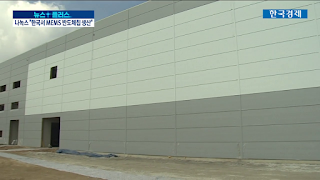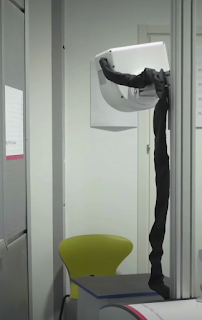Nanox claims to have submitted its official response to an accredited Review Organization under the FDA 510(k) Third Party Review Program as part of the company’s 510(k) application process for a single-source version of the Nanox.ARC on September 3, 2020. That single-source version of the Nanox.ARC is the ugly plain x-ray "machine" shown here.
Assuming the Review Organization ("Third Party") took a month, instead of a day, to read that response and recommend the device for clearance to the FDA, when should investors expect news of a 510(k) clearance?
If Nanox responses were satisfactory, the Third Party should have submitted its recommendation to the FDA by October 3, 2020, and the FDA should have cleared the device within 30 days, or by November 3, 2020. We are now at day 97. What is happening?
Well, while the FDA review timeframe is within a month, that doesn't always happen, for various reasons, including the FDA asking for more information.
Here is the histogram of all clearances of diagnostic x-ray systems (including tomo and mammo, but excluding dental) done through a Third Party since 1999.
 |
Histogram of x-ray diagnostic clearances through a Third Party
source: FDA 510(k) database |
Of the 179 clearances, only 10, or
6%, have occurred past day 97 since 1999.
Worse, of the 10 clearances in the past 5 years, none have occurred past day 86. All of the four successful clearances submitted in 2020 (submitted in April-November) were done within 22-26 days.
Oops.
Note: There are reasons to believe that Nanox never submitted for clearance anything, either directly to the FDA or through the Third Party Review Program, or if it did, the submission was likely fraudulent.
Note 2: If anyone is wondering what was that outlier device that took almost a year after the Third Party recommendation to get cleared,
here it is. A simple wireless controller for an x-ray system. It actually took 550 days since the company had submitted to the Third Party. That Third Party is no longer participating in the FDA program, by the way, and it is not clear whether the company is still in business (last website update in 2019?).
Note 3 (added January 22, 2021): It appears Nanox is confused about how its single-source source device looks like. Here is a fancy-looking one (from a presentation slide at a JP Morgan conference), not the ugly one presented at RSNA 2020 in December 2020. If Nanox is confused, think about how confused the Third Party and the FDA must be (assuming Nanox ever submitted anything for clearance, of course)!
Note 4 (added January 27, 2021): An avid reader of this blog, @Midas touch on Youtube, has remarked:
[RichardXRoe's] "perspective" is at best biased. Please don't throw allegations around without any sources - you will get sued for such false statements without providing proof.
E.g your claim that the external company answered within 1-30 days and sent it to the FDA and that the approval is now delayed. How would you know how long it took the external company to respond? If you make such drastic claims like "it's" a fraud you simply must provide evidence. I am more than happy to look at a different angle if you would present it. I assume you probably started shorting below $40 and I am sorry for you, but these statements will just bring you more trouble.
And here is my response:
First of all, there is no external company and no approval in the
510(k) Third Party Review Program. There is a Third Party and a recommendation. If that recommendation is "substantially equivalent," then the FDA has 30 days, by statute, to clear the device or not, as already explained. The Third Party does not answer.
Second of all, there are now reasons to believe that Nanox never submitted anything for clearance to anyone ever, or, if it did, it did so fraudulently (see, for example, Note 3 above).
So, of course, I have never claimed that the external company answered something within some days, sent something to somebody, and the approval is now delayed.
What I do claim is that,
according to Nanox, the Third Party received a reply to its additional information request on September 3, 2020. The response, according to Nanox, included additional data and other information to complete the application and to address certain deficiencies highlighted by the reviewer, including the results of certain performance tests, and was submitted within the required time frame. So it is reasonable to assume that the Third Party, after
waiting for six months, read the reply
on the same day. It is also reasonable to assume that the Third Party, being busy and such, waited a few more days and submitted its recommendation (substantially equivalent or not substantially equivalent) to the FDA within a month.
The rest is history. That is, the history of the 510(k) Third Party Review Program shows that the chances of clearance for Nanox have now dimmed, assuming that Nanox ever submitted anything for clearance to anyone to begin with. And that is
trouble.
Note 5 (January 28, 2021): I just saw that the
6K filing announcing the supposed response incorrectly characterizes the equivalence claim.
The submission was based on a predicate filing for an equivalence claim to an existing FDA-approved X-ray imaging system by another market participant, and no new claims were made as to the operation, image quality or functionality of the Nanox.ARC versus the predicate device.
A 510(k) requires demonstration of substantial equivalence to
another legally U.S. marketed device, not to an existing FDA-approved X-ray imaging system. Most x-ray imaging systems are FDA-cleared, and very few are FDA-approved. All of those approvals are over 5-year-old (a search for "tomo" in the
PMA database shows the latest original device was in April 2015, for example), and therefore
are not good predicates. Why did Nanox mis-characterize the equivalence requirement? The device that Nanox has supposedly submitted is a simple x-ray device - why would its predicate require any approval (like say a
breast tomosynthesis device would 10 years ago)?
Note 6 (January 29, 2021): A question was posed on Seeking Alpha: If the device were fake, why did Nanox submit for clearance? And the answer (heavily paraphrased) is: Well, without the promise of clearance or approval or grant, Nanox has nothing (since so far no one is interested in its x-ray cold cathode or source, an exempt device that does not require clearance, after 5+ years of heavy marketing). I have reasons to believe that the company never submitted anything to anyone for clearance. But let's assume for a moment that the company did indeed submit a device for clearance through the Third Party Review Program, as the company says. Well, the Third Party may have already recommended to the FDA not to clear the device (that is, an NSE recommendation). How would one know, since it is not public information? Why would Nanox tell the public the truth, if it did not tell the truth to begin with? Maybe Nanox has already withdrawn or abandoned its submission - no way to know without a FOIA request that the FDA says it can take a year. And about that device: Nanox stated in a
draft registration statement filed with the SEC in early February 2020 that
the device was NOT WORKING when submitted for clearance in January 2020, which sounds like fraud (unless it was an "honest" mistake or mixup, of course):
We have not produced a working prototype of the Nanox.Arc (page 9)
Moreover, see also Note 3 above.
Note 7 (January 30, 2021): There is a theory on StockTwits that somehow COVID-19 has disrupted and delayed the clearance process through the Third Party Review Program. That is completely untrue, and it makes no sense - in fact, FDA issued a
special guidance to expand availability and capability of x-ray systems since they have been used for COVID-19 diagnostics. As already pointed out above, all the four clearances in 2020 were done within less than 30 days. Micro-C, the only x-ray
clearance through a Third Party so far in 2021, was also done within 30 days (although that device's clearance had been "pending" and "imminent," whatever those mean, since 2018, see also
here)
Note 8 (February 2, 2021): The company
filed this gem with the SEC yesterday. So it appears the FDA has requested additional information. The good news is that Nanox did submit something to someone at some point. The bad news is that the submission may have been fraudulent, as the FDA is asking about intended use and predicate.
Note 9 (February 9, 2021): Nanox now
changes its story. Nanox now says that Third Party was not entirely happy with Nanox response, but at the end recommended the submission for clearance on December 28, 2020
In the United States, we are taking a multi-step approach to the regulatory clearance process. As a first step, we submitted a 510(k) premarket notification for a single-source version of the Nanox.ARC to an accredited Review Organization under the Third Party Review Program in January 2020. As part of the review process, in March 2020, we received an information request, referred to as a major deficiency letter [no such thing in the 510k process, but ok], from the Review Organization, which among other things, required us to provide additional data and other information to complete the application and to address certain deficiencies highlighted by the reviewer, including the results of certain performance tests. On September 3, 2020, we submitted our response to the Review Organization. The response included additional data and other information to complete the application and to address certain deficiencies identified by the reviewer, including the results of certain performance tests. On September 10, 2020, the Review Organization requested that we include a second predicate device in our 510(k) premarket notification [ oops, a second predicate!?! and Nanox proved substantial equivalence to it in 16 days, wow! ] . On September 26, 2020, we submitted our revised 510(k) premarket notification to the Review Organization, which the Review Organization subsequently recommended to the FDA for clearance on December 28, 2020. On January 1, 2021, we received an information request from the FDA through the Review Organization regarding our submission, which we responded to on January 4, 2021. On January 30, 2021, we received additional information requests from the FDA which, among other things, require us to address certain deficiencies and questions, including requests that we provide additional support regarding the intended use of the Nanox.ARC and the comparability of the Nanox.ARC to the predicate device. We plan to respond to these requests promptly. In addition, we will continue to work to address further information requests, if any.
So, since Nanox now says the clock started on December 28, 2020, we are now 43 days into the 30-day process, giving a 15% chance of clearance, using the entire history since 1999.
Note 10 (March 11, 2021): Wrote a blog post about what was supposed to happen, if Nanox did not lie to investors about the status of its FDA submission, if there was any, of course.
Update March 11, 2021: Fixed the Notes numbering.
Update April 5, 2021: Nanox beat the odds and got clearance for a Nanox.Cart (an ugly single-source device).
































